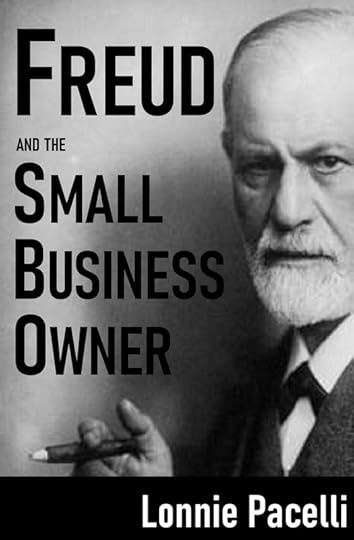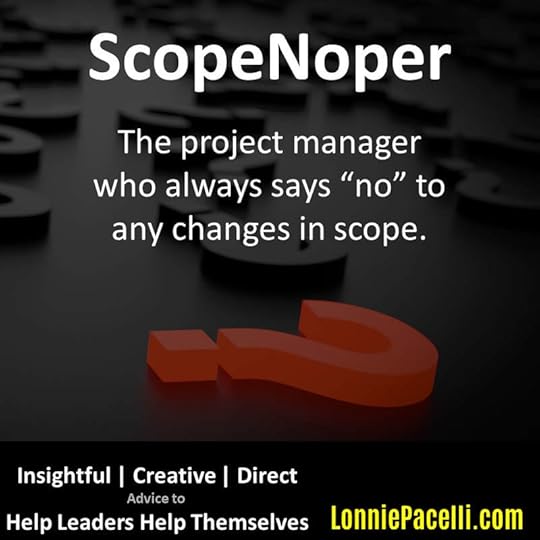Lonnie Pacelli's Blog, page 33
September 16, 2021
The 5 Tollgates of Selling Up-Part 1
 “He’s clueless,” Alan said to his peer, Tracy as they walked out of the meeting.
“He’s clueless,” Alan said to his peer, Tracy as they walked out of the meeting.Alan had gone into his presentation to his VP, Amir thinking it was in the bag. What in his mind should have been a slam dunk turned out to be 30 minutes of inquisition-like questions, debating of assumptions, and skepticism of his solution, all followed by a “We’re not going to do this.”
“I just can’t believe how out of touch he is,” Alan continued. “The solution is as plain as the nose on his face, and he can’t see beyond his own incompetence!”
Tracy was quiet as the two walked and Alan continued to sputter. After a few minutes, Alan couldn’t help but notice Tracy’s silence.
“What do you think?” Alan asked.
“How about we go in the conference room and chat,” Tracy said.
“Sure.” Alan had always respected Tracy’s judgment and how she commanded the respect of not just peers and followers, but also her management. The two went into the conference room, Alan shut the door, and they sat.
“Alan, you’re incredibly bright and very passionate about your work.”
“But. . .” Alan said, waiting for the other shoe to drop.
“You haven’t yet mastered how to sell up.”
“Sell up?”
“That’s right.” ~~~~~Let’s leave Alan and Tracy’s conference room chat for a minute. In my professional career I’ve had many opportunities to sell an idea to an exec. Sometimes I was successful in getting my idea sold, while other times I failed quite miserably. As I progressed in my career and sat more on the other side of the table, sometimes I bought what was being sold and sometimes I put the kibosh on it. Getting experience in both roles helped me better understand what both the exec and the person selling an idea go through and the barriers that can bog things down. I’ve locked on what I call “five tollgates” an exec goes through when being sold an idea. In full transparency, I did not do extensive research on the tollgates other than talking with several other execs about their points of view and corroborating it with my own experiences. What I have seen though, is a greater success rate in selling an idea when I create content that gets me through each tollgate in my pitch.
To explain the first tollgate, let’s go back to Alan and Tracy.
~~~~~“What’s selling up?” Alan asked.
“In my experience there are five tollgates an exec has to make it through before he or she will buy into an idea and take action. Let me ask you a question, is this the first interaction you’ve had with Amir?”
“It is.”
Tracy smiled. “That explains things.”
Alan gave her a puzzled look. “What do you mean?”
“You never made it through the first tollgate.”
“What’s the first tollgate?”
“You never established credibility,” Tracy said.
“I didn’t?”
“No. In my experience, execs have to see you as credible before they’re willing to listen further. If you don’t have credibility with the exec and haven’t taken steps to establish it, you’ll likely not make it through the tollgate.”
~~~~~Selling up tollgate 1: I believe you’re credible
An exec wants to know that you speak from an informed position on your idea. If you already have a reputation for being credible, you’ll likely have a low or nonexistent barrier to making it through this tollgate. If you’re an unknown entity with no preceding reputation, having good facts and data to demonstrate you know what you’re talking about will help you. The difficulty comes if you have a preceding perception as not being credible. While many execs will give people an opportunity to recover from a negative perception, they still will likely have a higher barrier that you will need to break through if you hope to make it through the tollgate.
If you already have a reputation for being credible, don’t worry about spending a lot of time convincing someone you should be listened to. If you’re an unknown like Alan or have a negative credibility reputation, then you’ve got to spend time with facts and data convincing the exec you should be listened to. A good tip that you haven’t broken through the tollgate is either getting repeatedly challenging questions about your idea or getting no reaction at all. This second one is tougher because the exec could just be politely letting you get through your spiel taking as little time as possible. The best sign that you’ve made it through the tollgate is getting a couple of questions that you respond to directly and candidly, with the exec acknowledging your answers and showing engagement in what you have to say.
The bottom line to making it through the tollgate is to get a good understanding of where you stand with the exec. If you’re a known and respected entity, then do a bit of show-and-tell that demonstrates you’ve done your homework. If you’re an unknown or clawing up from a deficit position, then you may need to place more focus on establishing your credibility before the exec will hear you out. If you’re not sure where you stand, talk to someone who knows you and has some exposure to the exec and have them coach you. It may seem like a bit of work up front but if done well can make all the difference in how your idea is received.
Check out part 2 of The 5 Tollgates of Selling Up.
Published on September 16, 2021 02:47
September 10, 2021
Free 9/15-16: Freud and the Small Business Owner
 Free 9/15-16: Freud and the Small Business Owner
Free 9/15-16: Freud and the Small Business OwnerGet it at https://amzn.to/2OVjQd8
#freebook #entrepreneur #startup #kindle #kindlefire #Kindlefreebooks #Kindledeals #FREE #mustread #goodreads #greatreads #freebie #freebies #kindlebook #ebooks #ebook
Published on September 10, 2021 02:40
September 3, 2021
Free 9/8-9: Don't Throw in the Towel, Throw Down the Gauntlet!
 Free 9/8-9: Don't Throw in the Towel, Throw Down the Gauntlet!
Free 9/8-9: Don't Throw in the Towel, Throw Down the Gauntlet!Get it at https://amzn.to/2DuT7SC
#freebook #leadership #kindle #kindlefire #ebooks #ebook #Kindlefreebooks #Kindledeals #FREE #mustread #goodreads #greatreads #freebie #freebies #kindlebook #ad #teamwork
Published on September 03, 2021 02:39
Sloppy or Shady?
 Sheesh.
Sheesh.Recently I received two LinkedIn requests to connect, one from a rep at a well-known insurance company and the other from a financial planner at a well-known financial services company. In the first request the rep told me that the insurance company notified him that my construction company is eligible for a special program that grants an immediate discount.
Sounds great; the problem is I don't own a construction company.
Twice I asked him to tell me who at the insurance company notified him. He finally responded with a “nobody notified us,” even though in his original message he was “notified by that my construction business qualifies for the discount.”
In the second request the financial planner told me he works with a few employees of LonniePacelli.com and would love to walk me through his investment process.
I have two employees; myself and my wife, who confirmed with me she is not sitting on a wad of cash and investing without my knowledge.
I asked him which LonniePacelli.com employees he worked with. He responded and weakly blamed it on an auto-response that he used for other clients. He did apologize for the inconvenience, but the fact that he gave a bogus excuse didn’t sway me.
I am intentionally not divulging the company names nor the individuals who sent me connection requests; there's no need to do that. Getting these two messages caused me to think more about these types of requests and the impression it left on me. With the financial services request, the financial planner blamed it on technology and didn’t take the time to review a very short LinkedIn message before sending it off to me. With the insurance request, the rep flat-out lied to me when I pressed him for an answer.
Sloppy financial planner. Shady insurance rep. Neither worthy of my business.
One can argue that the sloppy financial planner just made an honest mistake. Maybe so. However, the financial planner was pitching me on him managing my money. Do I really want someone overseeing my nest egg who doesn’t even take the time to read a simple LinkedIn message before sending it? Sorry, but no chance. The first and lasting impression he left, even though he apologized, was one of someone who doesn’t pay attention to details. Not a good impression for a money manager to leave.
Now onto the insurance rep. After he saw I wasn’t going away he sent me a response which directly contradicted with his original message to me. So, he not only sent me a bogus first message, but when he sent me the second one, he didn’t even bother to read what he first sent me. Why in the world would I trust someone with my insurance needs who doesn’t respond, then when pressed for an answer gives me conflicting answers? Not a chance.
Neither of these individuals considered not only the negative impressions they as people left on me, but also the negative impression I now have of both companies represented. I’ll probably forget both of their names, but I won’t forget either company.
The point here is simple. Do whatever you can to make your first impression positive. If something goes awry (which occasionally it does), own up to it, apologize, and ask for a second chance to make a great impression. Humbly admitting your mistake can work to your advantage and help you get the outcome you desire. Just don’t let your lasting impression be sloppy or shady.
Published on September 03, 2021 02:39
August 30, 2021
My Scaling Up Lessons Learned
 My very first job was baking bagels at age 15 back in Connecticut. When my family moved to Arizona a year later, I bagged groceries and stocked shelves until I graduated high school, then sold clothes while in college. After getting my degree I joined Arthur Andersen & Co. as management information consultant where I worked in Phoenix, Chicago, and Seattle. After 11 years I went to Microsoft where I worked for nine years before leaving to homeschool our son. My professional life now is as an author, publisher, consultant, and disability inclusion advocate. It’s a journey that I never anticipated and am thankful for the great life learnings it afforded me. Through the years I’ve experienced countless bumps and bruises, made lots of mistakes, and had a few successes along the way. One of my biggest growth areas, though, was in my scaling up as a leader. So much of what I learned came through making my own mistakes versus learning from others. To help you avoid touching the stove (trust me, it’s hot), I compiled a list of some of my most valuable (and painful) learnings. Hope they’re helpful.
My very first job was baking bagels at age 15 back in Connecticut. When my family moved to Arizona a year later, I bagged groceries and stocked shelves until I graduated high school, then sold clothes while in college. After getting my degree I joined Arthur Andersen & Co. as management information consultant where I worked in Phoenix, Chicago, and Seattle. After 11 years I went to Microsoft where I worked for nine years before leaving to homeschool our son. My professional life now is as an author, publisher, consultant, and disability inclusion advocate. It’s a journey that I never anticipated and am thankful for the great life learnings it afforded me. Through the years I’ve experienced countless bumps and bruises, made lots of mistakes, and had a few successes along the way. One of my biggest growth areas, though, was in my scaling up as a leader. So much of what I learned came through making my own mistakes versus learning from others. To help you avoid touching the stove (trust me, it’s hot), I compiled a list of some of my most valuable (and painful) learnings. Hope they’re helpful.Lean in during a crisis
Say “I’m focused,” not “I’m nervous.” Others want to know you’re in control.Be calm when everyone else is freaking out.Sometimes your best alternative is your least-worst alternative.Don’t be evasive or “go dark.” Others will make up their own answer if you don’t give it to them straight.Immediately get alignment on the goal and what needs to happen next, even if you don’t know all the steps to get to the goal.Act deliberately to match the urgency of the situation.Execute with purpose
Be manic about bringing clarity to chaos.Think good-enough to solve the problem; don’t polish the apple.Respond when asked for help, but ensure others are helping themselves too.Be clear on what, who and when and hold others accountable for getting things done.Be decisive but be willing to admit when you’re wrong.Make and follow through on tough decisions empathically and intentionally.Don’t let the urgent crowd out the important.Schedule everything in your calendar, including down time.Cultivate others
Be accessible, not open door; you need to get things done too.Respect others’ time like you want yours respected.Genuinely seek and candidly share wisdom.Don’t delegate tasks to complete, empower problems to solve.Do what you say you’ll do, and expect others to do the same.Create an environment where others feel comfortable asking for help. Be a great communicator
Have high value per word (Two ears, one mouth).Ask clarifying questions to ensure understanding.Ask knockout questions to challenge thinking.Watch others for verbal and nonverbal cues and adjust your actions accordingly.Behave like you belong in the position
Walk and talk with purpose, not like you’re out of control.Be politically aware, not politically driven.Never do anything that causes someone to question your integrity or principles.Know what life contentment (personal, professional, financial, etc.) looks like and work to achieve it.Don’t make your position look so taxing that no one else would want it; no sending 2 a.m. emails.
I’d love to know what you think of my learnings or if you’ve got questions. Ping me at www.lonniepacelli.com/contact.
Published on August 30, 2021 00:00
August 28, 2021
Free 9/1-2: Crush Those Risks and Issues!
 Free 9/1-2: Crush Those Risks and Issues!
Free 9/1-2: Crush Those Risks and Issues!Get it at https://amzn.to/2S2E073
#freebook #leadership #kindle #kindlefire #ebooks #ebook #Kindlefreebooks #Kindledeals #FREE #mustread #goodreads #greatreads #freebie #freebies #kindlebook #ad #teamwork #projectmanagement
Published on August 28, 2021 02:39
August 21, 2021
Are You a Wisdom Pontificator?
 “Oh brother, Moe is on the meeting invite,” Sue said to herself as she prepped for the meeting.
“Oh brother, Moe is on the meeting invite,” Sue said to herself as she prepped for the meeting.
Moe has been at the company for 40 years and considers himself the fountain of knowledge for how things should be done. Even though a lot in the industry has changed over the years, Moe loves to tell stories about “the good old days” and how so much of what the company is trying to do can’t work. “Those idiot suits on the 40th floor . . .” is one of Moe’s go-to quotes, explaining his view that leadership doesn’t have a clue as to how to run the company. Moe can easily take up ten minutes in a one-hour meeting justifying why a new idea won’t work, based on an irrelevant old war story which typically ends with, “If they just listened to me . . . .” Some team members try to be polite, and others try to shut down Moe’s bluster. Moe’s credibility, once well-regarded in the company, is now in the toilet. Despite his attempts to demonstrate relevancy, he’s simply viewed as a pontificator. While this illustration may seem a bit extreme, I suspect that most anyone reading this article has some version of a Moe whom they know either personally or professionally. It’s the person who makes things all about him, who knows it all, who isn’t interested in learning the wisdom others have to share, and who uses what he knows and has done in the past as a tool to stay relevant.
To understand a wisdom pontificator, we need to first understand a wisdom steward. A wisdom steward is balanced in how they seek and share wisdom. They humbly and genuinely seek wisdom to help make sensible decisions. At the same time, a wisdom steward transparently and candidly shares wisdom with others to help them make sensible decisions. The seeker and sharer roles are equally respected and practiced by the wisdom steward with the goal of embracing success for both themselves and others.
The wisdom pontificator generally isn’t concerned about genuinely seeking or candidly sharing. In fact, the pontificator is all about the pontificator. In his mind he knows it all. His motivation for sharing is about demonstrating his relevance, even if what he wants to share isn’t applicable to the situation. The pontificator tends to tell the same tired old stories over and over again that highlight his successes and, even worse, hint that those around him are idiots. People quickly tire of the pontificator and his time-wasting, self-serving bluster.
Are you a wisdom pontificator? Ask yourself these questions:Do you look to impress others with what you know?Do you tell the same stories over and over in meetings?When others are talking are you thinking about what you’re going to say next versus listening to what they have to say?Do others avoid asking you questions about your stories?Do others try to cut you off?Are your stories about making you look superior to others?Do you avoid admitting any kind of failure?
Wisdom pontificators generally aren’t interested in what others have to say; they are more concerned with demonstrating their relevance and making themselves look good. If this is you, then it’s time for you to shut your mouth, listen to what others have to say, and be more candid in your sharing. Wisdom stewardship is about mutual success with others, not about proving relevance.
Want to learn more? Check out Behind Gold Doors-Five Easy Steps to Become a Wisdom Steward.
Published on August 21, 2021 02:35
August 19, 2021
Free 8/25-26: Can You Make a 2AM Meeting?
 Free 8/25-26: Can You Make a 2AM Meeting?
Free 8/25-26: Can You Make a 2AM Meeting?Get it at https://amzn.to/2S2DQMZ
#freebook #leadership #kindle #kindlefire #ebooks #ebook #Kindlefreebooks #Kindledeals #FREE #mustread #goodreads #greatreads #freebie #freebies #kindlebook #ad #teamwork
Published on August 19, 2021 02:49
August 13, 2021
Free 8/18-19: Be a Killer Sponsor
 Free 8/18-19: Be a Killer Sponsor
Free 8/18-19: Be a Killer SponsorGet it at https://amzn.to/2OTin7f
#freebook #leadership #kindle #kindlefire #ebooks #ebook #Kindlefreebooks #Kindledeals #FREE #mustread #goodreads #greatreads #freebie #freebies #kindlebook #ad #teamwork #projectmanagement
Published on August 13, 2021 02:32
August 9, 2021
Asking for Help: The Leader/Follower Partnership
 [image error]
[image error]


 It was one of the worst meetings in Greg’s project management career.
It was one of the worst meetings in Greg’s project management career. “We are slipping by a month,” Greg said to his leader Kavita.
“How long have you known about this?” Kavita asked.
“Um, two weeks. I’ve been working hard to pull it back in but wasn’t able to do.”
“And I’m just finding out about this now? Why didn’t you ask for help?”
Greg stammered. “I thought I could handle it on my own.”
“This is really bad, Greg. We have customers relying on us to deliver on time. Sue, you work with Greg to see where we’re at and see if we can pull this thing back in. Hopefully it’s not worse than a month.”
“Will do, Kavita,” Sue said.
“Good, I need to northwind my management and let them know we may have a problem. Get back to me by end of day with your assessment. Clear?”
“Clear,” Greg said as he looked down, avoiding eye contact with Kavita.
“I’m disappointed you didn’t ask for help,” Kavita said as she left the room.
Asking for help. Something that by nature we know how to do. Whether it’s in the form of a baby crying, a kindergartener needing his shoe tied, or a teenager needing a parent’s help with a flat tire, asking for help is something each and every one of us has experience with. Yet in a professional setting, asking for help can be viewed as a sign of weakness; something that could reflect negatively on a person’s ability to deliver.
This couldn’t be further from the truth. Asking for help, when done effectively, not only ensures successful delivery but demonstrates a follower’s maturity and wisdom to use any and all levers available to secure delivery. There’s definitely a methodology to asking for help that both the leader and follower need to follow if their partnership is to flourish.
Before we go further, there are a few principles a follower needs to embrace to make this partnership of asking for help work well:Your leader collects a success tax on your work – Your ability to successfully deliver reflects positively not only on you but on your leader. Your success contributes to hers. At the same time, your failure reflects on her as well. Your leader has a vested interest in your success.You hold a gun to your leader’s head – The reality is that if you don’t deliver on something your leader may come down hard on you; but more often than not, your leader’s leader is going to come down hard on your leader for not delivering. She now has to explain why your project didn’t get delivered to her management.Asking for help is not a weakness – Just because you ask for help doesn’t mean you’re in any way less competent; it just means you are leveraging the tools at your disposal to get things done as effectively as possible. Your leader is one of those tools.Some things are just beyond your pay grade – Asking for help isn’t always about a leader having greater skill or competence on an issue; sometimes it’s about influence. A leader may be able to get something done more effectively simply because she has the leader title.
Asking for help means both the leader and follower have responsibilities for the partnership to work well. Take heed of the following points to ensure both are doing their part.For the follower:
Be specific about the what, who and when – Asking for help is more than just saying “I need help.” The ask needs to be actionable, the specifically-named person who needs to help you needs to be clear, and the when needs to be understood (no “ASAPs”). Also be clear about what happens if you don’t get the help by the date you need it.Demonstrate you’ve thought through the ask – Your leader wants to see that you’ve not just mustered up the courage to ask for help, but how you’ve thought through your ask, what you’ve done to try to help yourself, the alternatives you’ve considered, and the implications of those alternatives.Be timely in your ask – Give your leader as much lead time as you can in your ask. The longer you procrastinate or try to solve things on your own the less time you give your leader to act. Sure, sometimes your ask could truly have a short deadline because something unexpected crops up, just do your best to avoid creating a crisis because you dragged your feet.Be measured – Your leader wants you to be deliberate, focused, and calm in your ask. Set aside the drama and demonstrate that you’re in control of the situation even if things aren’t going well.Document it – Put the what, who and when down in an email and send it to your leader. Copy yourself on the email so you can…Hold your leader accountable – Be deliberate about following up with your leader on the action. Assume your leader has a hundred things she is working on and may need reminders to get something done. Don’t just make the ask and not follow up.Give your leader what she needs to help you – Need your leader to send an email to someone? Craft the email for her for her to tweak and send. The easier you make things on your leader to help you, the greater the likelihood your leader will do what you need.
For the leader:
Provide a conducive environment – Don’t make your follower feel inadequate, embarrassed, or ashamed when asking for help. Set the tone that asking for help is OK.Take time to understand the ask – Ask questions to understand the implications of the ask and ensure can accurately represent the need to whoever else you may need to talk with. You don’t want to be in a situation where you deliver something different from what the follower expected. He may not question you and just try to take things into his own hands.Follow up – Simple; if you commit to taking action, do it. Don’t use one standard for taking action with your leader and a different one with your follower. Treat both with the same respect and urgency.Think and act like a partner – You have a role in your follower’s success and it’s your job to make sure he has the tools and support he needs to get things done. Your follower depends on your expertise, influence, and pay grade to do things he cannot do on his own. Partner with him to get things done.Ask the follower to help you help him – Is your follower expecting you to talk with another manager to free up resources to get something done? Ask him to draft an email that you can then tweak and send. It not only saves you time, but also gives your follower practice in communicating with others higher up the chain.Reinforce “how can I help you?” – It’s not enough to create a conducive environment; you need to continually reinforce with your followers that your job is to help them be successful, and that they should leverage you to get things done. Keep saying, “How can I help you?” and provide positive reinforcement for those who take you up on it.Don’t do your follower’s job for him – Asking for help isn’t a get out of jail free card for a follower to just throw up his hands and expect you to do his job. If a follower hasn’t thought through alternatives and implications or isn’t specific about the ask, be specific with what you want and ask them to follow through. His job is to make asks clear and thoughtful so you can take action effectively.
Effectively asking for help not only paves the way to getting things done more expediently but also positively impacts the leader-follower relationship. Followers, learn how to effectively ask for help. Leaders, respect the partnership and follow through.
Published on August 09, 2021 00:00



